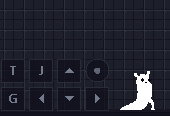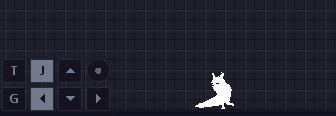Status: #partdone
Note Type: #collection
Tags: #googledoc, link
Movement Guide Doc
Expected Knowledge
Recommendations
Here are a few basic essential moves for players of all skill levels unsure where to start:
movedocrecommendations
Basic Moves
Jumping
ledgepullup
When hitting a wall just below a ledge, holding forwards and pressing jump allows slugcat to climb up.
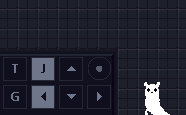
Note that pressing against walls gives Slugcat friction, and so jumping towards the ledge is best to gain maximum height.
wallslide
Slugcat will slide down walls when holding into the wall.
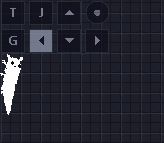
walljump
Wall jumping is performed by pressing jump while sliding down a wall (holding into the wall), immediately switching holding direction to the other wall and tapping jump as soon as Slugcat comes into contact with that wall.
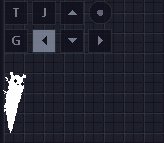
Note: It’s important to switch holding direction as soon as possible after jumping. The aim is to jump as soon as possible while holding into the wall, to minimise height lost to sliding, then immediately hold away from the wall to minimise negative aerial drift.
coyotejump
It is still possible to jump a few frames after running off an edge. This can be used to maximise horizontal jump distance, or safeguard against tight jumps.

polecoyotejump
This can also be done off of poles.
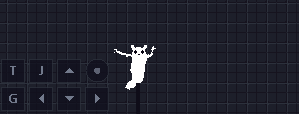
extendedcoyotejump
Extending coyote jumps off ledges is possible by crouching while running off, then tapping up and jump simultaneously.
groundeddoublewalljump
Hugging a wall then simultaneously tapping outwards + double tapping jump allows Slugcat to jump twice. Jump needs to be double tapped quickly as the window is quite short.
coyotewalljump
While sliding down a wall, holding out then pressing jump allows Slugcat to hop midair for a short window of time. This only works when holding away from the wall.
Note: This is likely a leniency/coyote mechanic for pressing outwards before pressing jump while wall jumping.
This works even when only a small part of Slugcat’s body brushes against a wall, as this counts as being in the sliding state.
This allows for wall jumping up shafts where Slugcat’s head initially only brushes against the opposite wall.
Charge-Hopping
chargehop
Entering the crouching position and holding jump until Slugcat’s back is arched, then releasing, allows for a charge-hop. For almost all jumps Slugcat is subject to aerial drift, and so holding forwards allows the player to maximise Slugcat's horizontal range whenever hopping or pouncing.

Note: In this gif, forward is held immediately after Slugcat’s back is arched. This is useful to avoid accidentally pressing forward too soon, and running off the edge.
airorient
Tapping up immediately after charge-hopping puts Slugcat in an upright position, giving it more height. This can help grab ledges upon landing.
ceilingslopeslide
When holding forwards and pouncing into a sloped ceiling, Slugcat will slide down until up is pressed. This tech has no application in the base game.
throwboost
Throwing rocks or spears during a jump or pounce increases horizontal velocity, allowing Slugcat to travel further than normal jumps and pounces. This is most effective when done at the start of a jump.

Note: Throw boosting can be used at the start of any aerial move to increase speed / range.
Turning Around
turnflip
Backflips are performed by jumping immediately after turning around.
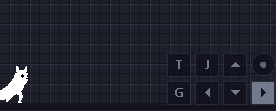
turnjump
Turn hopping involves repeatedly jumping after turning to conserve turn momentum and cover ground quickly. Momentum conserved this way only depletes when in contact with the ground, so will last longer with more precise and better timed jumps.
Tunnels
tunnelturn
It is possible to turn around inside tunnels by holding in the opposite direction and pressing jump. This is possible in vertical tunnels as well, but only turning upwards, due to free falling.

tunnelfreefall
It is possible to fall vertically inside tunnels by holding down and pressing jump. This works whether Slugcat is facing forwards or backwards.
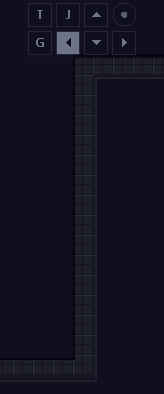
tunnelboost
Boosts inside tunnels can be performed by pressing jump. This gives a short burst of speed with ending lag. This ending lag makes the boost slow Slugcat down overall, unless this lag is cancelled.
Boost ending lag is cancelled by boosting into a room pipe, a shortcut, or into open space. This can be combined with jumps to exit tunnels at running speed.

tunnelexitboost
Pressing jump when exiting tunnels & pipes gives a burst of speed, which represents Slugcat kicking off the wall behind it. This can be combined with jumps to exit tunnels at running speed.
The same can be done in pipes.
tunnelcornerboost
Pressing jump and holding forwards when rounding a corner also gives a boost. As with boosting out of shortcuts and room pipes, this is like kicking off a wall behind you. This can also be done around T junctions, as long as there is ground behind Slugcat’s feet.
Slides
Basic Slide
slide
Slides can be performed by pressing down and jump together while moving. A specific sound can be heard when performing a slide.
Pressing jump too late will cancel the slide and cause a stumble.
Not holding forward long enough results in a shorter slide which cannot be pounced or flipped out of.
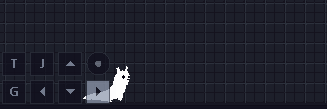
slidetunnelentry
This is a more efficient way to enter ground level tunnels. This can also be done with pipes.
Tapping down directly over a tunnel mid slide allows for quickly entering said tunnel. This also works with shortcuts and room pipes in the ground.
Sliding into a tunnel can be combined with a tunnel boost to gain extra speed on exit.
slideparkour
Pressing jump while sliding into a short wall allows Slugcat to slide up and over the ledge while in a crouched state. This can be used in conjunction with jumping to traverse rough terrain.
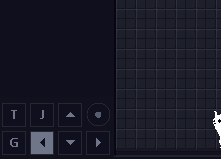
Slide-Pouncing
slidepounce
Jumping mid slide results in a long pounce.
Pressing the second jump too early or late results in a smaller crouch-hop.

hop
It is not possible to change to an upright state mid pounce, and so unless able to roll, Slugcat will always land in a crouched state, which slows the player down.
This can be avoided by pressing jump on landing, to enter a temporary upright state, and then pressing up to switch to standing.
This also conserves momentum, which is extremely useful for exiting all pounces and roll chains.
slideinstantpounce
Normally only useful/applicable with tool assisted inputs (macros or keybinds), Slugcat can pounce in the first frame of a slide.
This is practically achievable in game by slowing down time, e.g. with mushrooms. It can also be done without slowdown, which is less practical due to the difficulty in pressing a key twice in 3 frames.
Instant slide pounce height can be increased with prior horizontal momentum from either turning or jumping.
Slide-Flipping
slidespin
Pressing jump while holding backwards mid slide results in a long backflip.
Note:
To slide flip correctly, forward must be released, and backwards held, before jump is pressed.
The jump window is the same as for slide pouncing.
Pressing jump and back too early results in a regular failed slide pounce due to the shorter slide. Forward must be held long enough for a regular slide, to slide flip.
slideinstantspin
Normally only useful/applicable with tool assisted inputs (macros or keybinds), Slugcat can perform a slide flip on the first frame of a slide.
This is practically achievable in game by slowing down time, e.g. with mushrooms. The inputs are more demanding than instant pouncing, which makes this less practical overall but still achievable.
Extended Sliding
extendedslide
This can be done by throwing an item backwards mid slide, and greatly increases distance travelled. As with regular slides, holding forward is needed to get a full length slide.
extendedslidejump
By holding forwards and repeatedly hopping after an extended slide, momentum can be conserved for a long distance, similarly to turn hopping (Explained later in guide). This is unique to extended slides, as they eject the Slugcat into a standing position unlike regular slides.
extendedslidepounce
It is possible to pounce out of an extended slide. This requires holding forward significantly longer than normal, as the extended slide needs to also be extended to full length.
extendedslidespin
It is also possible to slide flip out of extended slides. Like extended slide pouncing, this requires holding forward significantly longer, as the extended slide needs to also be extended to full length.
eihop
An extremely useful tool for quickly travelling horizontal distance and crossing wide gaps, this move is performed by starting an extended slide, pressing jump 1 frame later and then holding forwards. For optimal speed, forwards must be pressed and held within a few frames of the jump input. This move can be performed during any frame in which slide extension is possible.
extendedslideinstantpounce
A similarly performed variant of the extended instant pounce, this move is performed by starting an extended slide and pressing jump on the same frame, then pressing forward exactly one frame later. The forward input must be within one frame of the jump input, otherwise a slide-flip will be performed instead. This move can only be performed when started on one of the last 2 possible frames of a slide in which slide extension is possible.
This move can be rolled out of like any other pounce and travels further than regular slide pouncing.
extendedslideinstanthop
The fastest known horizontal move to date, performed by starting an extended slide, pressing jump and holding forwards 1 frame later and then pressing down 1 frame after that. For optimal distance, forwards must be pressed and held on the same frame as the jump input. This move can be performed during any frame in which slide extension is possible.
denhop
Holding down and pressing jump over a den mid slide launches Slugcat upwards.
In the example below, the wall directly next to the den makes entering it via slide reliable. This move is a lot less reliable when attempting to enter dens without a wall next to them. Smaller boosts out of dens can also be applicable for gaining height in combat, on a case to case basis.
Rolls
roll

Note that rolls are not interrupted by single tile blocks, allowing for rolling over more uneven terrain.
droproll
Holding down and left/right when falling from a height greater than a normal jump (a height of about 4 tiles) will send Slugcat into a roll. This will negate landing stun when falling long distances.

fastroll
Exclusively possible with analog sticks. Faster roll speed can be achieved by angling the analog stick more closely to the horizontal axis above 🡶 / 🡷. Fast rolls can only be chained into normal rolls, and moving back to the full 🡶 / 🡷 angle mid roll slows the roll to normal speed.
This can also be done with a virtual controller program on PC.

Note that when using input display, the 🡳 input will not be visible during a fast roll. Additionally, this allows Slugcat to pick items up during the roll rather than dropping them (down + grab).
Chaining From Moves
It is possible to roll in either direction upon landing from flips, pounces and bounces (Explained later in guide) by holding left/right and down.
Roll-Pouncing
rollpounce
Pouncing can be done by jumping out of a roll.
Rolls can be chained together indefinitely on flat ground by pouncing as late as possible.
This can be done regardless of which way Slugcat is landing, as long as the pounce was initiated late enough.
The longer the roll, the higher the pounce arc. Tapping jump while holding down and left/right will pounce instantly without rolling at all.
A rapid series of beats can be heard when rolling. (1 initial on beginning the roll, then 4 more in total) These can be used to time pounces.

Remember that you can land upright from pounces, and conserve momentum, by tapping jump on landing, then up!
rollslide
It is possible to slide immediately after a roll by holding forwards and down, and timing jump at the very end of the roll when Slugcat is in the upright position.

Misc Roll-Starters
ledgedroproll
Pressing down while running off ledges causes Slugcat to enter a fast fall state. This state allows for rolls from any height.
Rapidly turning back then forwards before dropping off the ledge extends this drop window.
While running forwards towards a single tile drop, holding down with correct timing causes Slugcat to enter a roll. This is due to the aforementioned fast fall mechanic where pressing down while dropping off ledges gives a boost of acceleration.
The same can be done with the turning method shown above for slightly more reliable timing.
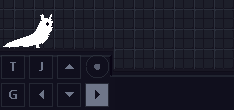
ledgehang
Releasing all controls for a short frame window while pulling up on ledges leaves Slugcat in an indefinite hanging state. Achieving this paused state is not necessary for fast falling, and the hanging state itself currently has little use and no reliable setup.

crawlturnfastfall
While pulling up ledges, pressing in the opposite direction causes Slugcat to fall down at an accelerated rate. Fast falling causes landing stun and (for longer falls) death, at much shorter heights. Entering the fast fall state guarantees that a roll can be performed on landing.
Fast falling can be done from any height, including 1 tile high drops. This allows any tile high block to be used for initiating rolls.
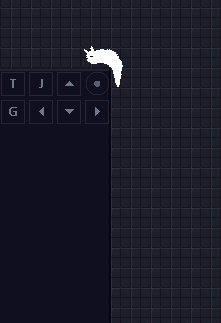
By positioning to hit the ground head first, tumbling, a roll state can be achieved through minimal setup.
jumptumble
By holding upwards, Slugcat leans forwards while running, causing midair rotation when correctly interrupted with a jump. This allows for a roll on landing.

crawlturnroll
Slugcat can roll from crouch by turning in one direction then another, while holding down from immediately after the second turn onwards.

It is also possible to roll from crouch by first running in one direction and quickly tapping crouch, then holding down the opposite direction, and holding down crouch again.
Note: This method can be easier to learn initially, but requires accounting for the necessary setup movement pre roll.
crouchtumble
It is also possible to start a roll by tapping jump multiple times while running and holding down. A minimum of 2 jump taps are needed but more can be used. Limited application as more consistent options exist for roll starting.
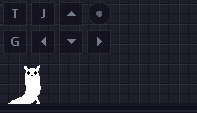
Poles
Vertical Pole Movement
poleboost
Pressing up + jump while on a pole gives a short upward boost, the ending lag of which can be cancelled by entering room pipes, shortcuts, or jumping off the pole.

Boosting to the top of a pole cancels boost end lag and switches Slugcat to the balancing position immediately.
poletipsnap
Pressing up when coming into contact with the tip of a vertical pole will cause Slugcat to instantly perch on it. This only works for reasonably small vertical speeds.
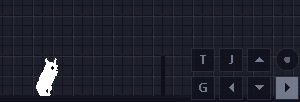
poleregrablagcancel
Switching to the other side of a pole while also tapping jump causes Slugcat to let go of and instantly regrab the pole in a couple of frames. While not useful on its own, this can be used to cancel boost end lag as described below.
Boosting up a pole then immediately re grabbing resets boost lag and immediately allows for another boost. This can be done repeatedly in a rhythm to quickly climb up poles, alternating sides each boost. Pressing jump too early will cause a laggy boost, and switching sides too early will cause Slugcat to jump off the pole.
Unlike other pole climbing methods, this is applicable on all poles and vastly increases climbing speed, allowing Slugcat to outrun fast pole climbing lizards.
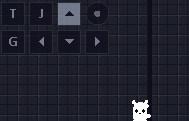
Note: This can be done in a slower sequence or as a single instance for practice! The “end” of this move is the pole re grab (the boost end lag cancel).
Pole-Momentum
flippolemomentumjump
Backflipping onto poles gives an upward boost, which can be paired with a pole boost (jump + up while on pole) to gain height quickly from the ground.
This is done first by holding back, and then tapping jump and holding up to initiate a backflip. Once Slugcat has grabbed the pole, tapping jump again while still holding up adds the momentum of a pole boost to the existing momentum of the backflip, causing Slugcat to slide off the top of the pole.
Jump can then be tapped again to perform a regular jump midair.
For practical application, jump is quickly tapped three times in succession while holding up. The initial turn (to initiate a backflip) must be done before jump and up are simultaneously pressed.
slidepolemomentumjump
Sufficient pole momentum for a midair jump can also be gained via a slide, most effectively on 2 tile high poles. This can be performed by holding up mid slide to transition to the pole, tapping jump once to boost upwards and then tapping jump midair.
Horizontal Pole Movement
polepullupjump
Pressing jump + forward mid pullup propels Slugcat forward, which is useful for long stretches of pole.

polebounce
Pole hopping is done by jumping, holding forward, and tapping jump while hitting the pole.
To pole hop from pounce, release and enter the upright position in mid air by immediately pressing up, then let go of up and jump in time to hop. This is significantly faster than jump pole hopping.
Note: The timing can be tricky, remember not to press jump too early. This will also not work if holding any other direction except forward when pressing jump. It is also possible to pole hop while rising up through a pole from below.
poleregrabcrawl
While hanging on a horizontal pole and moving forwards, quickly alternating down and up causes Slugcat to drop from the pole and immediately regrab, giving a burst of speed. This can be chained to move quickly across horizontal poles while hanging.

Turns
Dash-Turns
dashturn
Turns can be performed by reversing movement direction while running at full speed.
A successful turn can be identified by a sound cue, the small “droplets” seen above, and a short burst of speed in the turning direction.
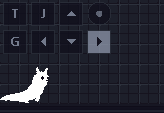
turnflip
Backflips are possible as a result of dash turns, and can be done without droplets showing.

turnjump
Turn hopping involves repeatedly jumping after turning, to conserve dash turn speed. Momentum conserved this way only depletes when in contact with the ground, so will last longer with more precise and better timed jumps.
Storing Turns
A dash turn depletes over time for 10 frames. The functionality of a dash turn can be stored by interrupting the turn with other moves during these frames. Most applicable turn storage derives from crouching or sliding.
turnstore
The first method of storing a dash turn is to start a turn, then immediately interrupt it by crouching. This momentum is then released when Slugcat once again enters the upright position, which can be seen by the small droplets and burst of speed gained when standing up.
Another simple way to demonstrate dash turn storage is to jump while standing on a horizontal pole, or the tip of a vertical one. This results in a backflip.
Note that simply grabbing a vertical pole from crouch often depletes all available frames of turn storage due to the temporary standing state. This can be avoided by crouch jumping onto the pole.
As sliding involves crouching, turns can also be stored by sliding immediately after turning around. As before, the burst of speed and droplets on standing upright indicate successful turn storage.
Turn storage is only ever lost by being in a standing state, or initiating a backflip.
Consequently, stored turns are maintained through:
• Jumping between vertical poles, or dropping down from horizontal ones.
• Pulling up on a ledge (holding down to remain crouched)
• Entering/exiting tunnels (as long as always crouching)
• Entering room pipes / shortcuts (as long as always crouching)
• Jumping while crouched (performing a small crouching hop)
• Slide parkour up walls.
• Turning over while crouched (Original turn direction is immutable and important to keep in mind for several moves)
• Stun, including explosions!
As sliding involves crouching, turns can also be stored by sliding immediately after turning around. As before, the burst of speed and droplets on standing upright indicate successful turn storage.
Note that sliding pole grab does not have the same frame depletion issue as crouching pole grab.
The second method of turn storage is done with poles exclusively, by pressing up to grab the pole immediately after turning. The window for this is very narrow, before the turn appears to have started. Unlike crouching, this does not have any further applications.
The third method of turn storage is done by turning when running off a ledge, which interrupts the turn. Holding outwards isn’t necessary to store the turn, but slightly extends the window.
Turn storage is conserved through pouncing, and so backflips off poles, both vertical and horizontal, are possible after turnaround slide pounces.
Slide flipping can also store turns, although this is harder to determine as Slugcat lands standing up.
Landing on a pole, horizontal or vertical, after turnaround slide flipping allows for a backflip.
turnstoredflip
Backflipping from a turn stored crouch is done by pressing up and jump simultaneously while holding in the direction of the turn.
Note that the original turn direction must be held in order to backflip, even after changing crouching direction.
The same inputs apply for backflipping from a slide as they do for crouching.
Failed slides can be backflipped out of as well, which insures against failure.
It is possible to backflip out of a turn stored roll by holding in the original turn direction and pressing up + jump simultaneously.
turnstoredjump
The speed burst from releasing turn storage by standing from crouch can be prolonged by jumping, as with a normal turn.
Crawl-Turns
crawlturn
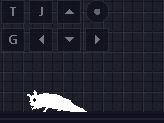
crawlturnroll

crawlturncancel
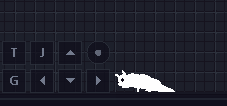
crawlturnjump
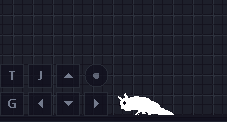
crawlturnfastfall

crawlturnvault
Jump-Boost
Water Movement
waterboost
Combat
Throwing Weapons
throw

spearpin
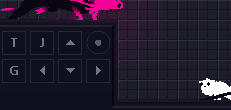
mouthspear
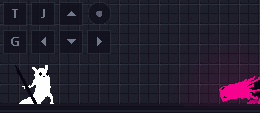
crouchthrow
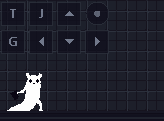
Slide Throwing
Vertical Throwing
downthrow
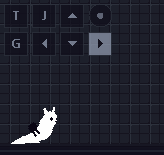
slopeslidespear
